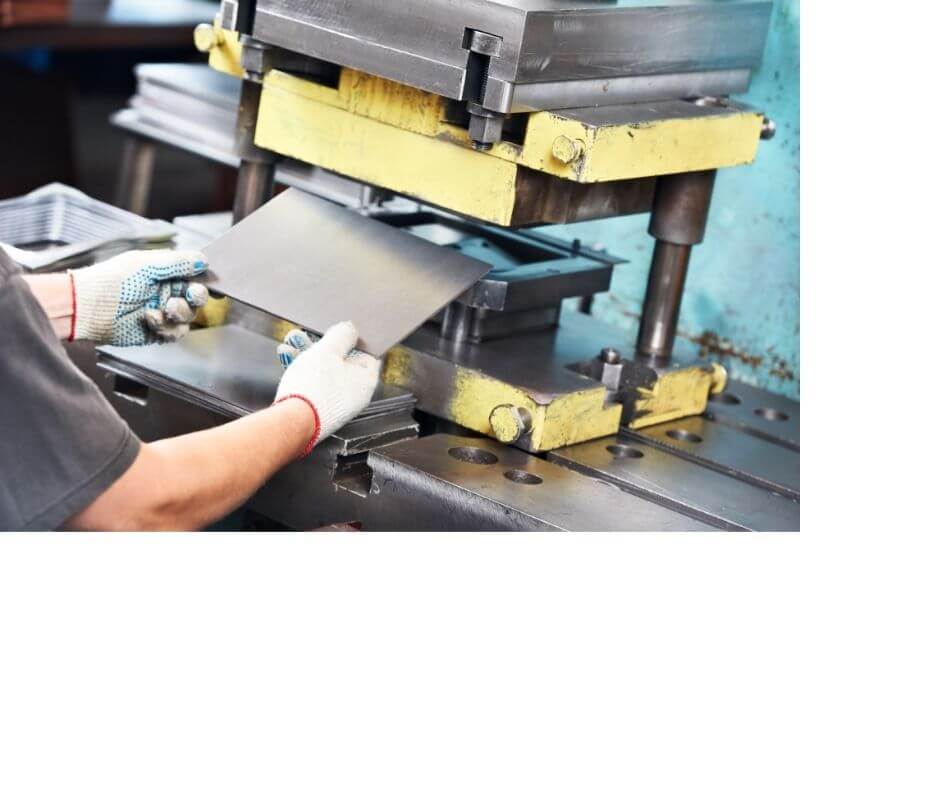As an automated, advanced machining process, metal stamping provides the versatility and detailed precision needed for a variety of metal parts and components. Well-suited for high production runs, metal stamping offers the accuracy needed for small, complex geometries.
While metal stamping isn’t suitable for all manufactured metal designs, it can be a cost-efficient way to produce large quantity runs with consistency and precision.
The Metal Stamping Process
Metal stamping involves pressing sheet metal (also known as blanks) or coils and forming the metal through a specified die to create the component’s net shape. Utilizing CAM technology, tooling designs are created for precision and accuracy of the stamped metal part. As a cold-working process, the metal stamping process is quick, with the creation of the dies and tooling reflecting the most time-consuming aspect of the process.
Metal Stamping Forming Methods
Forming methods used for metal stamping include the following processes:
- Bending
- Metal is bent into your desired shape.
- Drawing
- Sheet metal is drawn over a die and stretched into the desired shape.
- Coining
- Blanks are placed between punch and a die. The punch then bends the material to the desired shape.
- Embossing
- Blanks are pressed against the die or passed through a roller die. This process can create recessed or raised parts.
- Flanging
- Flanges are introduced to the sheet metal via presses or dies.
- Hemming
- Sheet metal is folded onto itself.
Cutting Methods for Metal Stamping
The cutting method used for your stamped metal component will depend on the component’s functionality. Some of the cutting methods include:
- Blanking
- Net shape is cut via blanking.
- Lancing
- Used in progressive die stamping, lancing creates cuts in the metal.
- Piercing
- Ideal for holes or cutouts, piercing cuts via a punching hole.
- Shearing
- Blanks are cut along a straight line.
Materials Used for Metal Stamping
One of the strengths of metal stamping is its versatility with respect to materials that can be used. The metal material you use will depend on your component as well as your finishing needs. Commonly used metals for stamping include the following:
- Non-ferrous metals
- Includes brass, bronze, copper, and nickel.
- Ferrous metals
- Stainless steel and other iron-based alloys.
- Precious metals
- Gold, silver, and platinum.
- Specialty/exotic metals
Types of Metal Stamping
The production method you choose for your component depends on the production run and materials used as well as the shape and size of the component. Some methods are better suited for complex geometries while other methods are better suited for larger-sized parts.
- Deep Drawing
- Depth is deeper than standard drawing and reflects depth that exceeds the diameter.
- Fine Blanking
- A high-pressure method that produces smooth edges.
- Four-Slide Stamping
- Suitable for complex geometries, this method can accommodate multiple bends and punches in one step
- Progressive Die Stamping
- Closed dies are moved through stamping stations to form and stamp the metal component. The final stamping station separates the part from the sheet metal.
- Transfer Die Stamping
- Comparable to progressive die stamping, transfer die stamping separates the metal at the beginning of the process. It is suitable for large components.
Application Uses for Metal Stamping
Used across a wide range of industries, metal stamping is suited for the following applications:
- Automotive
- Aerospace
- Communications
- Consumer appliances
- Electronics
- Medical devices
Factors to Consider for Metal Stamped Components
With its production capabilities providing cost-effectiveness for high-volume runs, metal stamping can also accommodate intricate, complex designs. While metal stamping can accommodate small production runs and prototypes, due to the higher tooling costs, it is not always the best option for these types of production runs.
As previously mentioned, tooling takes up a considerable amount of pre-production time. Changes to the design can push back your production schedule and also elevate the overall cost of your metal stamped components.
Laser Cutting as an Alternative to Metal Stamping
As an alternative to metal stamping, laser cutting is suitable for short production runs or prototypes due to the lack of tooling needed. Although it requires no additional tooling, laser cutting can also alter chemical properties due to the high temperature needed for the cutting process.
Discover How Metal Stamping Can Work for You
Learn more about metal stamping and how it can work for your precision component requirements. Contact us or call us at 408-205-1319 today.



